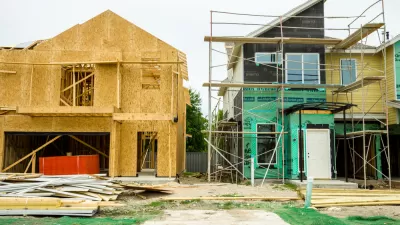While many policies that affect housing are decided on at the local level, there are several steps state officials can take to pave the way for healthier housing markets.

According to a study by Jenny Schuetz of The Brookings Institution, "the economic, social, and environmental costs of poorly functioning housing markets spill over beyond local boundaries to affect entire regions and states. State-level action has the potential to improve these outcomes," Schuetz writes.
The report outlines steps state governments can take to improve the conditions of housing markets and meet the needs of their state's populations. After analyzing their local conditions, states can encourage production in high-demand areas through production targets and other measures, provide direct support to low-income households, and use land use and building regulations to mitigate the effects of climate change. Schuetz stresses the importance of starting with "thoughtful data analysis" and, from there, using small-scale pilot programs to evaluate and adjust policies before putting them into full effect.
Schuetz cautions that "[b]ecause states currently start from such different baselines—both in market conditions and institutional capacity—there is not one consistent set of recommendations that will work for all states." However, some general rules can help all state officials begin to understand how to alter their state's policies to most effectively impact the housing market. The full study examines case studies from five states to show how they have used different tools to improve housing markets with their unique characteristics.
FULL STORY: States can improve housing well-being through thoughtfully designed policies

Alabama: Trump Terminates Settlements for Black Communities Harmed By Raw Sewage
Trump deemed the landmark civil rights agreement “illegal DEI and environmental justice policy.”

Planetizen Federal Action Tracker
A weekly monitor of how Trump’s orders and actions are impacting planners and planning in America.

The 120 Year Old Tiny Home Villages That Sheltered San Francisco’s Earthquake Refugees
More than a century ago, San Francisco mobilized to house thousands of residents displaced by the 1906 earthquake. Could their strategy offer a model for the present?

In Both Crashes and Crime, Public Transportation is Far Safer than Driving
Contrary to popular assumptions, public transportation has far lower crash and crime rates than automobile travel. For safer communities, improve and encourage transit travel.

Report: Zoning Reforms Should Complement Nashville’s Ambitious Transit Plan
Without reform, restrictive zoning codes will limit the impact of the city’s planned transit expansion and could exclude some of the residents who depend on transit the most.

Judge Orders Release of Frozen IRA, IIJA Funding
The decision is a victory for environmental groups who charged that freezing funds for critical infrastructure and disaster response programs caused “real and irreparable harm” to communities.
Urban Design for Planners 1: Software Tools
This six-course series explores essential urban design concepts using open source software and equips planners with the tools they need to participate fully in the urban design process.
Planning for Universal Design
Learn the tools for implementing Universal Design in planning regulations.
Clanton & Associates, Inc.
Jessamine County Fiscal Court
Institute for Housing and Urban Development Studies (IHS)
City of Grandview
Harvard GSD Executive Education
Toledo-Lucas County Plan Commissions
Salt Lake City
NYU Wagner Graduate School of Public Service





























